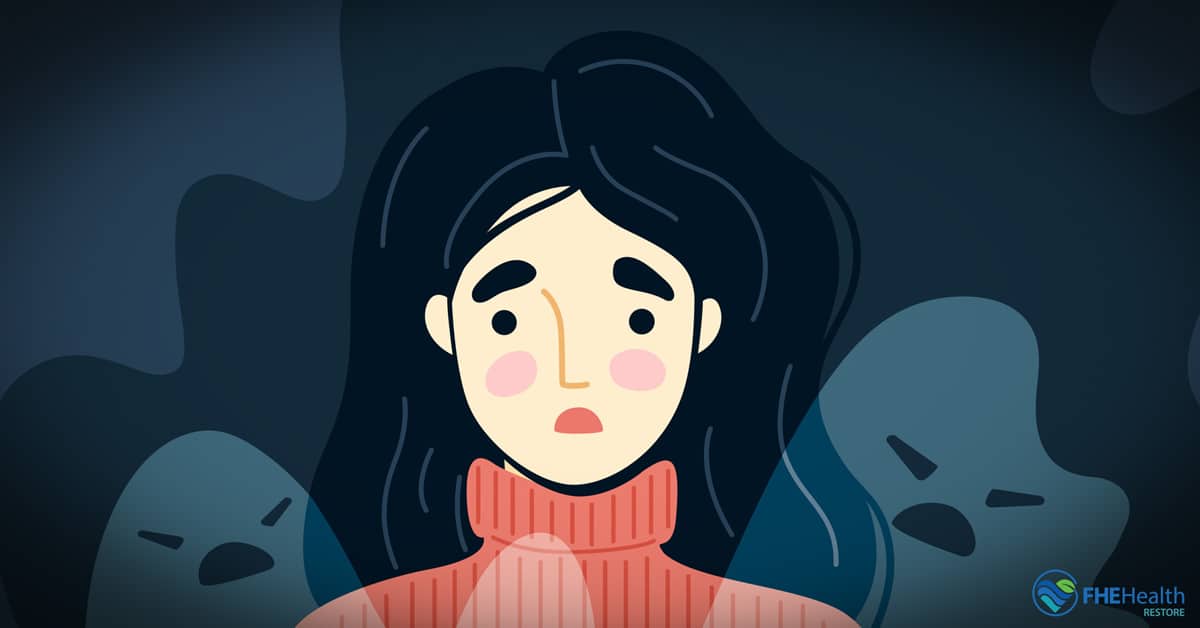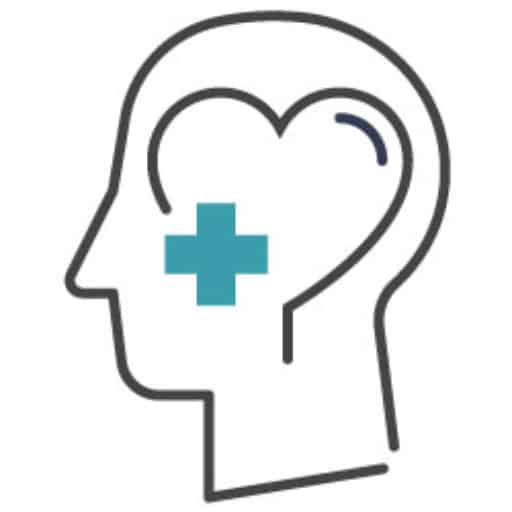Do you frequently have to take a shot of something strong to find the courage to get out of bed and face the day? Or do you discreetly take a few hits of weed throughout the day to calm your nerves, even when there’s nothing specific to agitate you?
Substance abuse occurs when you misuse or overuse addictive substances such as alcohol, marijuana, prescription drugs and opioids. Persistent substance abuse can lead to substance use disorder (SUD), a mental health condition that makes it hard to stop abusing addictive substances despite their effects on your personal, social and professional life.
Data from the Substance Abuse and Mental Health Services Administration (SAMHSA) shows that over 9 million Americans have co-occurring disorders, whereby mental health conditions such as anxiety, depression and bipolar disorder develop alongside substance use disorder. Generalized anxiety disorder is one of the most common co-occurring disorders and can result from or contribute to substance abuse.
Let’s take a closer look at generalized anxiety disorder, its relationship with substance abuse and the interventions that can effectively treat anxiety and addiction.
Overview of Generalized Anxiety Disorder (GAD)
Generalized anxiety disorder is a mental health condition that makes you worry excessively or dread everyday activities in your personal, social and professional life. The persistent worry and fear you experience can cause psychological and physical symptoms such as:
- Difficulty concentrating
- Restlessness
- Irritability
- Muscle tension
- Fatigue
- Insomnia
A mental health practitioner may diagnose you with GAD if:
- You experience three or more symptoms multiple days a week.
- Symptoms occur continuously for at least 6 months.
- You can’t control the symptoms.
- The symptoms interfere with your social and occupational functioning.
Impact of GAD on Daily Functioning
Everyone gets nervous and experiences anxiety over things such as punctuality, school or job performance, health status and personal relationships. Most people can reduce or eliminate their worry by taking steps such as setting alarms, getting routine health checks and communicating with loved ones. However, people with GAD experience anxiety and worry that eclipses the severity of the situation. The condition also renders futile any attempts to alleviate the worry or fear.
Severe anxiety is debilitating, making it difficult for you to concentrate on anything other than the mental and physical symptoms of your condition. It can make you irritable, keep you up at night and affect your ability to perform regular tasks such as bathing, cooking, cleaning or driving.
Worrying too much about your job performance causes you to hyperfocus on unimportant details and miss crucial deadlines, putting your livelihood in danger. Anxiety over relationships can make you needy and clingy or cause you to distance yourself from loved ones in fear they’ll do the same soon.
Untreated generalized anxiety disorder causes an all-encompassing fear that can slowly ruin your life.
Substance Abuse and Its Relationship to GAD
Psychiatric research shows a strong relationship between anxiety and substance abuse. Generalized anxiety disorder is among the leading anxiety disorders connected to substance use disorder because people with undiagnosed GAD often use alcohol and other drugs to reduce the severity of anxiety symptoms.
There’s a close link between GAD and alcohol. Alcohol suppresses the brain and nervous system, slowing your thoughts and actions. As a result, you may feel relaxed when drunk and experience fewer anxious thoughts. Alcohol also lowers inhibitions, giving you “Dutch courage” that makes navigating different daily scenarios easier.
Drugs such as benzodiazepines are also known for their depressive effect. People with GAD can abuse variations such as Valium and Xanax to reduce the occurrence of anxiety-fueled thoughts.
Mutual Influence
Anxious thoughts suppressed through substance use come back once the intoxication wears off. Thus, you’ll have to continuously take alcohol and other drugs to avoid anxiety symptoms.
However, continuous substance use makes the brain develop a tolerance to drugs used. Consequently, you’ll need to increase the quantities of drugs and alcohol you take to get the desired defense against anxiety symptoms, creating a dangerous cycle that leads to drug addiction.
While people with GAD may use drugs to self-medicate against symptoms, people with substance abuse problems can develop anxiety symptoms due to drug withdrawal. Studies of anxiety and alcohol use disorders have found that people who don’t initially have GAD can experience anxiety symptoms after they stop drinking because alcohol affects the parts of the brain responsible for responding to stressors in a healthy way. Stopping drinking can cause heightened anxiety because your brain isn’t used to dealing with daily stressors without intoxication. Anxiety withdrawal symptoms are also associated with drugs such as antidepressants.
People who lack the means to undergo professional addiction treatment often prefer to continue using alcohol and other drugs to avoid the frightening anxiety symptoms of withdrawal.
Treatment Approaches for Anxiety and Addiction
Any form of treatment for substance use disorders that ignores co-occurring mental health conditions is bound to be ineffective. If you have anxiety symptoms caused or exacerbated by substance abuse, receiving treatment for both conditions helps you develop healthy coping mechanisms that make it easier to deal with anxiety triggers without relapsing.
A dual diagnosis identifies the mental health condition co-occurring with your substance abuse disorder. The diagnosis also outlines treatment methods that can simultaneously address both conditions.
Medical detox can be part of the treatment process for co-occurring anxiety and substance abuse. Physicians will monitor you during the process and administer medication to reduce the severity of anxiety withdrawal symptoms until the drugs fully leave your system. Once you transition to other forms of addiction treatment, you may continue receiving subscription antidepressants or benzodiazepines to manage GAD’s mental and physical symptoms, such as heart palpitations, bodily pain, muscle tension and irritability.
Therapy is another effective form of treatment for co-occurring disorders. Cognitive behavioral therapy (CBT) is one of the most-used forms of therapy for co-occurring GAD because it identifies the causes of your persistent anxious thoughts. CBT slowly replaces these negative thoughts with more helpful beliefs and teaches you healthy coping mechanisms that allow you to get back to the activities that used to make you anxious. People who undergo CBT during addiction treatment may successfully deal with anxiety triggers without resorting to substance abuse.
Group therapy is useful for treating co-occurring GAD because it allows you to exchange practical tips for battling anxiety with people who can relate to your situation. Group therapy also lets you develop a support system you can turn to whenever you’re triggered, reducing the chances of relapse.
Restore Mental Health provides different types of dual-diagnosis treatment for commonly co-occurring conditions such as GAD and substance abuse. Our treatment center in South Florida offers a supportive environment of addiction specialists and clients on the same journey as you. Contact us today to learn about the levels of care offered and how to receive quality anxiety and addiction care from our compassionate professionals.



